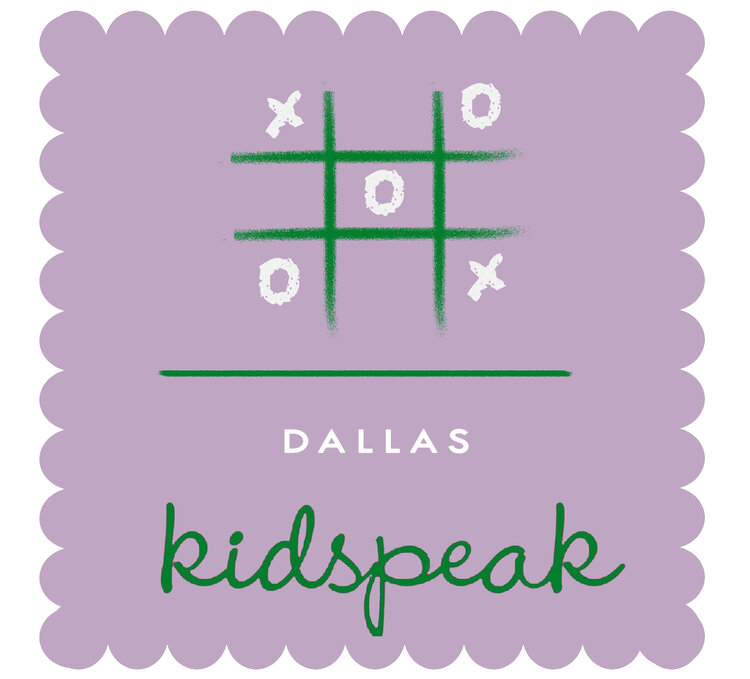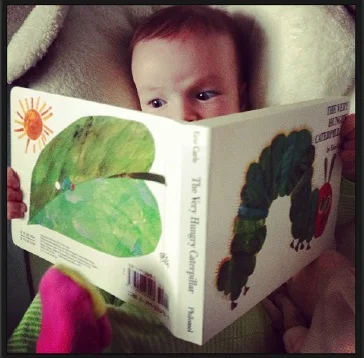Being a “speech therapist turned mommy”, one of my favorite things is chatting with other new moms about life with a little one and also answering any questions about child development. One thing I have come across is that many parents are under the impression that you can’t “work on” speech and language until the kids are older and able to “sit and do work”. Oh the contraire! You are able to “work on” speech and language from birth, it just doesn’t manifest in the form of “work” but as a way of life and a way of interacting with your child. Sure, many children pick up on things on their own and develop speech and language skills naturally, but that doesn’t mean you can’t foster even better understanding and communication. This will help set them up to succeed at a younger age and will encourage even better social skills with peers which is very important for play dates, daycare, preschool, Kindergarten, their overall social-emotional development and LIFE in general. Here are six simple ways to work on speech and language with a baby, toddler or preschooler and you don’t have to gather a million materials or break the bank!
BOOKS
This is an obvious one. Children’s books are packed full of language and are VISUAL. The book illustrations help little guys learn vocabulary fast. Start reading to your newborn. Even though they won’t understand for a while, they will enjoy hearing your voice and seeing bright pictures. Also, starting a book time routine early will only encourage book time at a later age. If a book is too complicated for your child and they lose interest quickly, simplify the book. Just describe the pictures or sing songs about the pictures. We do this a lot. If you can’t purchase lots of books all the time (because your child DOES needs new books as they grow in order to stay interested and stimulated), check out your local library. Also if you have children’s books you are never going to use again, give them as gifts to others with little ones. When our daughter was a newborn, our neighbor came by and gave us a stack of board books that their sons had outgrown. The best gift! Turn off the screens and read, read, read!
TALK ABOUT AND DESCRIBE WHAT YOU ARE DOING
Notice this doesn’t say “ask your poor child a billion questions all day long.” “What is it?!?” “Is it is a monkey!!?!” “What does the monkey say?!” “What color is it?!?” As adults, we do not talk to each other this way so why should we teach our child that humans only interact by drilling each other in tons of questions?! Also it’s a lot of pressure to feel like you have to answer a billion questions correctly all day long. Especially when you are just learning how to talk. Narrate what you are doing. Describe what you are doing. When you are in the kitchen and your baby is in the highchair or exersaucer, DESCRIBE. “Look! Mama is cooking! Bowl and spoon! Stir, stir, stir. Cooking in the kitchen!” Let them have a turn with whatever you are doing while you talk and describe. Your child will learn vocabulary fast this way!
SLOW DOWN, BREAK DOWN
Another no-no is talking a million miles a minute with millions of words in your sentences. Think about how you feel when you hear other people speak a language you do not understand. This is how your baby or young child feels when they are trying to learn and use language. To help them learn, slow down and break down your sentences. Instead of, “Come on we have to leave let’s put on your shoes get your socks and shoes put them on your feet hurry so we can leave……”, break it down! “Time for shoes! Shoes on feet! One shoe. On. On foot. Two shoes. On. On foot. Shoes on!” This is so helpful!
POINT AND SHOW
Adding in visuals will always encourage language learning. It seems simple but it can be easy to forget. Simply pointing to what you are talking about or holding up the object so your baby or child can see it will help their understanding and expression so much.
SING
Top 40 and show tunes are great and all, but singing about what you and your baby or child are doing will go A LONG WAY with learning speech and language. This has helped my daughter SO MUCH. When she is cranky or her attention span is spent, 99% of the time if a sing a song, I’ve got her back. I have made up simple songs about cooking in the kitchen, putting on shoes, going potty, everything. Now that she is 18 months old, she is starting to initiate the songs and also fill in the blanks. She loves it and you can tell it boosts her little confidence big time. Don’t forget about children’s music. It serves a huge purpose! Having a fun music time while you POINT AND SHOW will add so many words to your child’s receptive and expressive vocabulary. Some of our favorite children’s artists are Raffi, Laurie Berkner and Caspar Babypants.
PRAISE AND POSITIVE FEEDBACK
It’s amazing what a little praise and positive feedback will do. It is human nature to seek out affirmation and the desire to know we are doing well. This goes the same for babies and children. Don’t feel like you have to be in cheerleader mode 24 hours a day, but a simple high five, cheer or compliment will do wonders. If your child is doing something you want them to do (trying to talk, eating their meal, being kind, following directions, etc.), tell them you are proud. “Good + verb” is a wonderful go-to phrase to use. “Good talking!” “Good trying!” “Good eating!” “Good listening!” If your little one knows they are being successful, they are much more likely to engage in the positive behavior once again.
Start “working” on speech and language early! If trying all six tips at one time is too much, focus on one a day or one a week….whatever works for you. You will love seeing how your child responds and how their face lights up when they understand or try to interact. Enjoy!
~KidSpeak, LLC
www.kidspeakdallas.com


